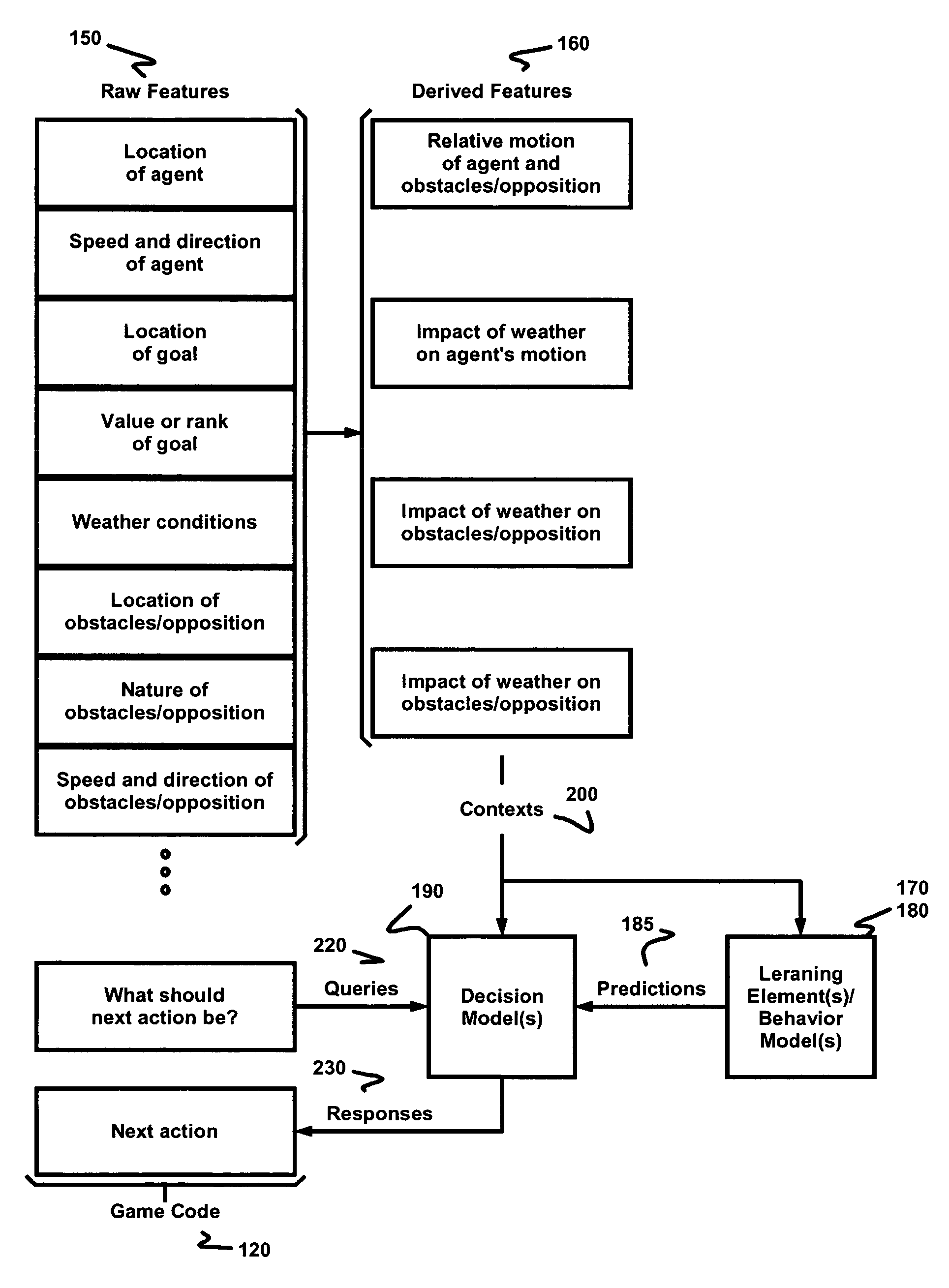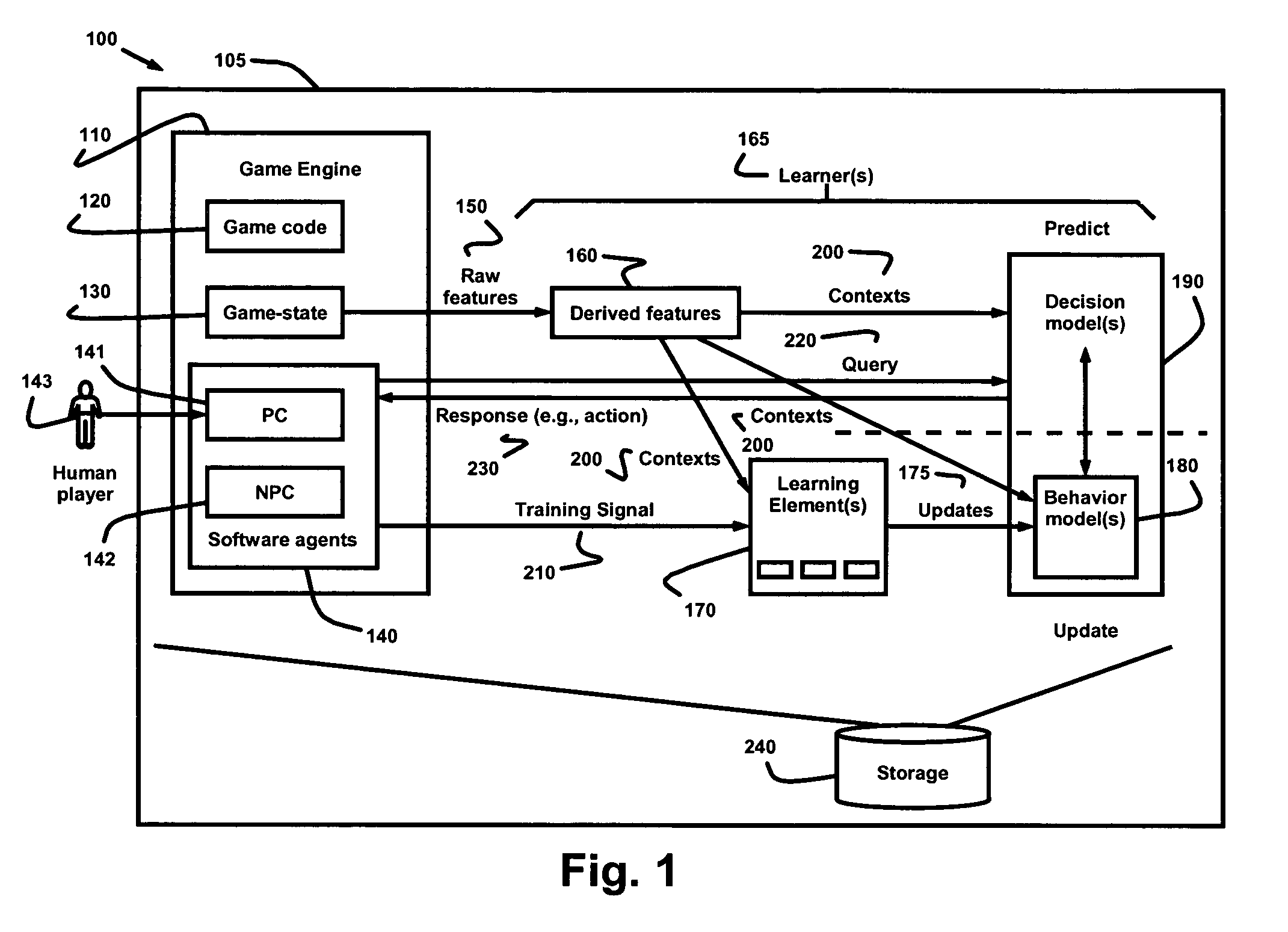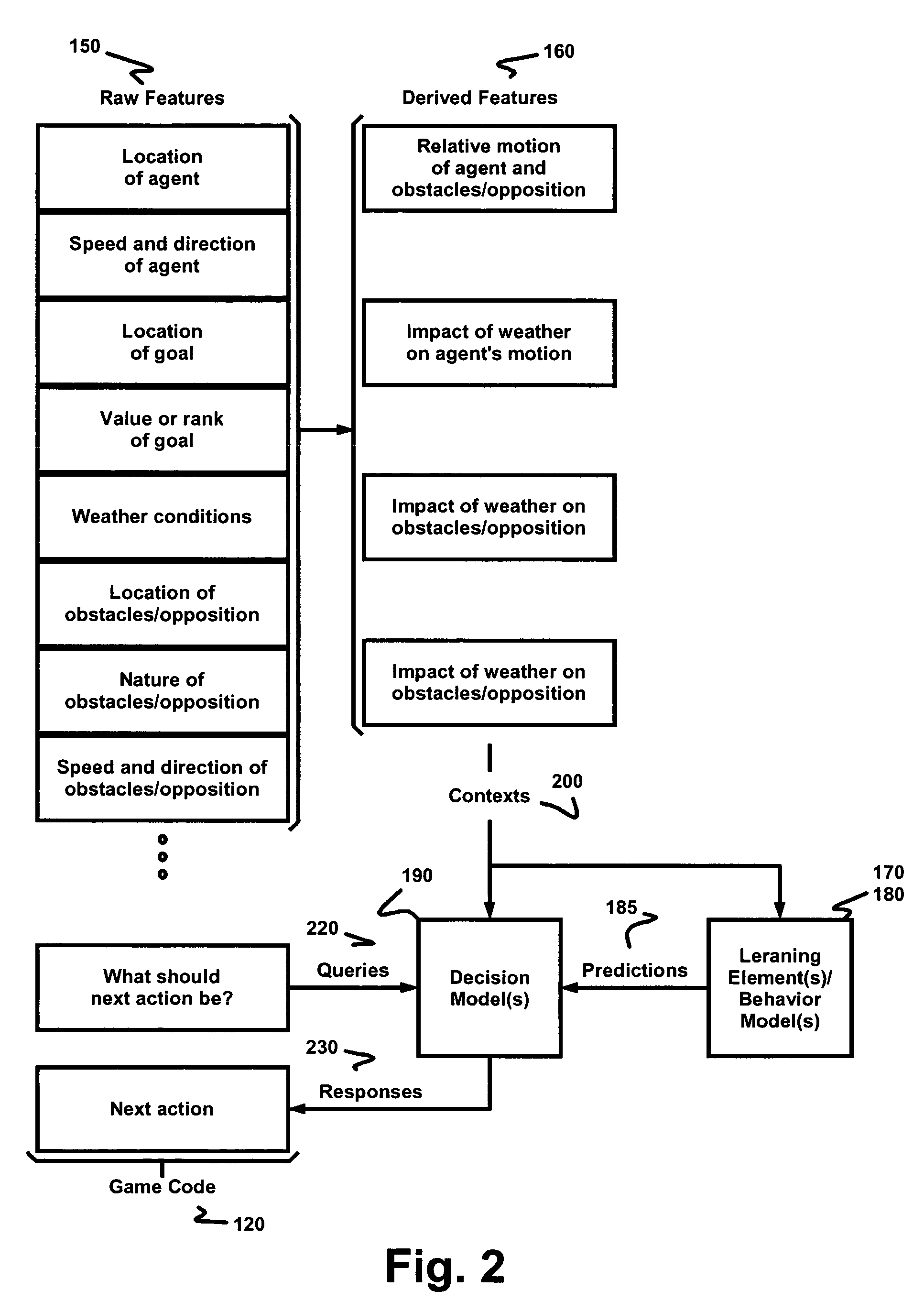Real time context learning by software agents
a software agent and context learning technology, applied in the field of context learning by software agents, can solve the problems of difficulty in making non-player characters learn about the game in real-time, remain less imaginative, intelligent, realistic, robust, etc., and do not shar
- Summary
- Abstract
- Description
- Claims
- Application Information
AI Technical Summary
Benefits of technology
Problems solved by technology
Method used
Image
Examples
example
[0174]FIG. 2 shows a block diagram of an example of context learning by software agents. The invention is not limited in any way to the details of this example.
[0175]Raw features 150 are shown in FIG. 2 as including various values and indications for game code 120. A learner according to the invention generates the derived features 160 from the raw features 150 and possibly from other derived features 160.
[0176]In the example shown in FIG. 2, the game code is for a simulator such as a flight simulator. The various raw features 150 relate to information about the flight simulation. The particular raw features shown in FIG. 2 are meant to be illustrative only; actual code for a flight simulator might use all, some, none, or different raw features.
[0177]The derived features 160 in FIG. 2 represent relationships between some of raw features 150. Derived features 160 according to the invention are not limited to such relationships. Furthermore, the particular relationships shown in FIG. ...
PUM
 Login to View More
Login to View More Abstract
Description
Claims
Application Information
 Login to View More
Login to View More - R&D
- Intellectual Property
- Life Sciences
- Materials
- Tech Scout
- Unparalleled Data Quality
- Higher Quality Content
- 60% Fewer Hallucinations
Browse by: Latest US Patents, China's latest patents, Technical Efficacy Thesaurus, Application Domain, Technology Topic, Popular Technical Reports.
© 2025 PatSnap. All rights reserved.Legal|Privacy policy|Modern Slavery Act Transparency Statement|Sitemap|About US| Contact US: help@patsnap.com



